Description
The clown sweetlips (Plectorhinchus chaetodonoides) is a visually captivating marine fish known for its striking colour and unique features. It can reach a maximum size of around 16 inches (40 centimetres). This species has an elongated body shape with a slightly compressed profile. Its body is dusky red and covered in white patches. Although, its appearance does change with age. The clown sweetlips has a large mouth and pectoral fins that are elongated and fan-like in appearance.
Taxonomy
The clown sweetlips belongs to the genus Plectorhinchus and the family Haemulidae. Plectorhinchus is a genus of marine fish commonly known as sweetlips, characterized by their distinct colouration and fleshy lips. The family Haemulidae includes various species of grunt and sweetlips. The clown sweetlips is closely related to other sweetlips species, such as the spotted sweetlips (Plectorhinchus chaetodonoides) and the harlequin sweetlips (Plectorhinchus chaetodonoides). The genus name Plectorhinchus is derived from the Greek words “plektron,” meaning “spur,” and “rhynchos,” meaning “nose,” referring to the presence of a bony knob on the snout of some species.
Natural Habitat
The natural habitat of the clown sweetlips (Plectorhinchus chaetodonoides) consists of coral reefs and rocky areas in tropical and subtropical waters. These environments are rich in coral formations, providing a variety of hiding places and crevices for the fish to seek shelter. The clown sweetlips is often observed in areas with moderate to strong water movement, where it can feed on a diverse range of small invertebrates and zooplankton.
Keeping the Clown Sweetlips Healthy:
The care level for the clown sweetlips is moderate, making it suitable for intermediate-level aquarists. Maintaining stable water conditions is crucial for their health and well-being. The recommended temperature range is between 74-82°F (23-28°C), with a salinity level of 1.020-1.025 specific gravity. Regular water quality checks, including monitoring pH, ammonia, and nitrate levels, are essential to ensure optimal conditions.
Special Requirements and Feeding
The clown sweetlips has a carnivorous diet, primarily feeding on small invertebrates and zooplankton in the wild. In captivity, it can be fed a varied diet consisting of high-quality frozen or live foods such as brine shrimp, mysis shrimp, and small pieces of seafood. Supplementing their diet with commercially available marine pellets or flakes designed for carnivorous fish is recommended to provide a balanced nutritional intake.
How Many Should I Keep?
When considering the clown sweetlips, it is recommended to keep a single specimen per tank, as they can become territorial and aggressive towards conspecifics. Providing a spacious aquarium with ample hiding places and open swimming areas is essential to accommodate their natural behaviour.
Lighting Preference
The clown sweetlips prefers moderate lighting conditions in the aquarium. Lighting systems that mimic natural daylight, with a spectrum that includes both blue and white light, are ideal for promoting their natural colours and maintaining their overall well-being.
Suitable Tank Mates
The clown sweetlips can coexist with a variety of peaceful and non-aggressive fish species in a well-sized aquarium. Suitable tank mates include other reef-compatible fish species such as tangs, angelfish, and peaceful wrasses. It is important to consider the size and temperament of potential tank mates to ensure compatibility and minimize the risk.
Breeding: Plectorhinchus chaetodonoides:
- Set-up:
Breeding clown sweetlips in captivity requires a well-maintained and spacious aquarium with suitable conditions. The tank should provide ample hiding places and have a stable water temperature between 78-82°F (25-28°C). It is essential to maintain excellent water quality with appropriate filtration systems.
- Courtship/Spawning:
Clown sweetlips exhibit a monogamous mating behaviour, forming pairs for breeding. During courtship, the fish engage in elaborate displays, including fin-flaring, circling each other, and darting movements. Once the pair has bonded, they ascend towards the water surface and release their gametes simultaneously, resulting in the fertilization of the eggs.
- Rearing:
After spawning, the fertilized eggs float freely in the water column. They hatch within 24-48 hours, and the larvae enter a pelagic stage, drifting with ocean currents. Providing suitable larval rearing conditions, such as plankton-rich water and appropriate food sources, is crucial for their survival. The rearing process requires expertise and specialized equipment to meet the unique needs of the developing larvae.
Sexual Dimorphism
Sexual dimorphism in clown sweetlips is not significant, with both males and females sharing similar external characteristics.
Distribution
The clown sweetlips, Plectorhinchus chaetodonoides, is naturally distributed across the Indo-Pacific region, including areas such as the Red Sea, Maldives, Indonesia, Philippines, and northern Australia. While there are captive-bred and line-bred strains of clown sweetlips available in the aquarium trade, the original fish species can be found in the wild in these geographical locations.
Summary
The clown sweetlips (Plectorhinchus chaetodonoides) is a captivating fish known for its vibrant colouration and unique features. It requires a well-maintained aquarium with stable water conditions and ample hiding places. Clown sweetlips are carnivorous and should be provided with a varied diet consisting of live or frozen foods. When breeding clown sweetlips, a dedicated set-up with appropriate tank conditions and specialized care is necessary. They exhibit monogamous mating behaviour, with courtship rituals and simultaneous egg fertilization. Rearing the larvae requires expertise and specific rearing techniques. Clown sweetlips are naturally distributed in the Indo-Pacific region, and while captive-bred strains exist, the original fish can be found in the wild in locations such as the Red Sea, Maldives, Indonesia, Philippines, and northern Australia.
The Fish pictured here are representative only and the livestock you receive may vary in pattern, coloration, and shape.


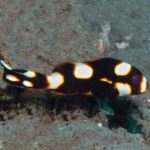
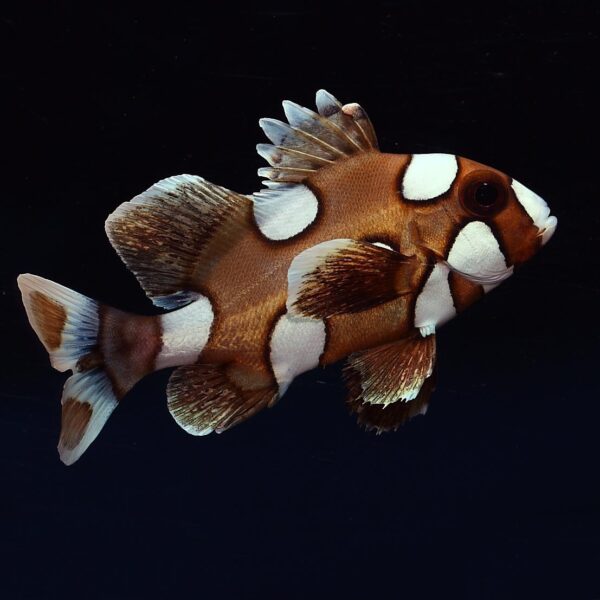

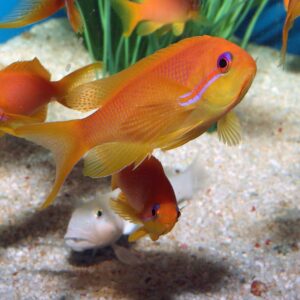

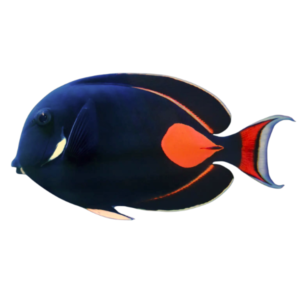
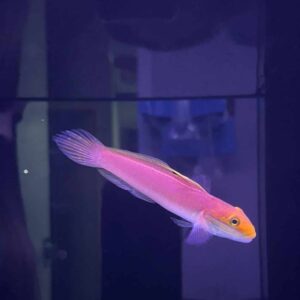
Reviews
There are no reviews yet.